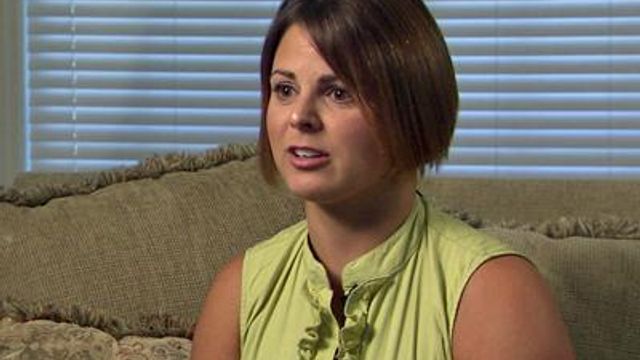Health Team
Dystonia patient achieves dream
Dystonia is a sustained, involuntary muscle contraction that produces abnormal postures and movements
Posted — UpdatedRALEIGH, N.C. — From 2000 to 2005, a neurological disorder gradually twisted Leslie Harrell's body. Her head was bent over to her left shoulder, and the top half of her body was pulled down to her left hip.
Dystonia is a sustained, involuntary muscle contraction that produces abnormal postures and movements, Dr. Richard Murrow, a neurologist at the University of North Carolina at Chapel Hill, said.
The condition made it increasingly difficult to work or even walk. “It gets sore and it's just really aggravating,” Harrell said.
In March of 2005, Harrell was hopeful that deep-brain stimulation performed at UNC Hospitals would help. In the procedure, a neurosurgeon implants electrodes in overactive circuits of the brain to disrupt the signals that cause the muscles to contract. The therapy also stops tremors in some patients with Parkinson's disease.
A month after surgery, the electrodes and hardware placed in Harrell's body led to an infection, so her doctors removed them. Harrell thought it was her last hope for a cure.
Five months later on Sept. 1, 2005, Harrell saw a noticeable difference in her body.
“I realized when I got out of bed that morning that my back was totally straight. I could walk,” she said.
Last April, Leslie Harrell became Leslie Craven, fulfilling a dream of walking upright down the aisle for her wedding to Josh Craven.
“It was amazing. I never thought that I would be able to do that,” Craven said.
Murrow said that even though the electrodes were gone, they might have disrupted brain circuits enough to cause gradual improvement.
“What's particularly unusual about her case is the way she reports that it occurred, in that it didn't occur gradually, but occurred more suddenly – several months out. Now that, I can't really explain,” Murrow said.
For Craven, there's only one explanation. "God healed me, completely. I know I had the surgery, but it's something the doctors just can't do."
Deep-brain stimulation is more common for patients with Parkinson's disease or tremors, where it normally has a more immediate effect. For dystonia patients, doctors say there’s a 50 percent chance that it will work, and improvements are more delayed.
As with any brain surgery, there are risks involved, so it should only be considered when all other medical options have failed.
• Credits
Copyright 2024 by Capitol Broadcasting Company. All rights reserved. This material may not be published, broadcast, rewritten or redistributed.





